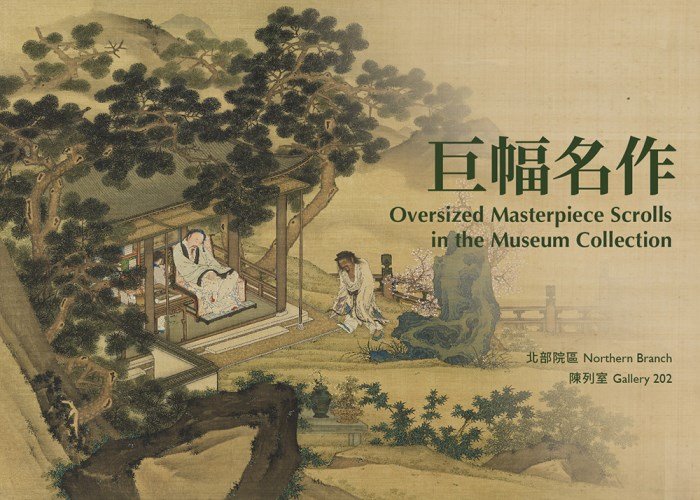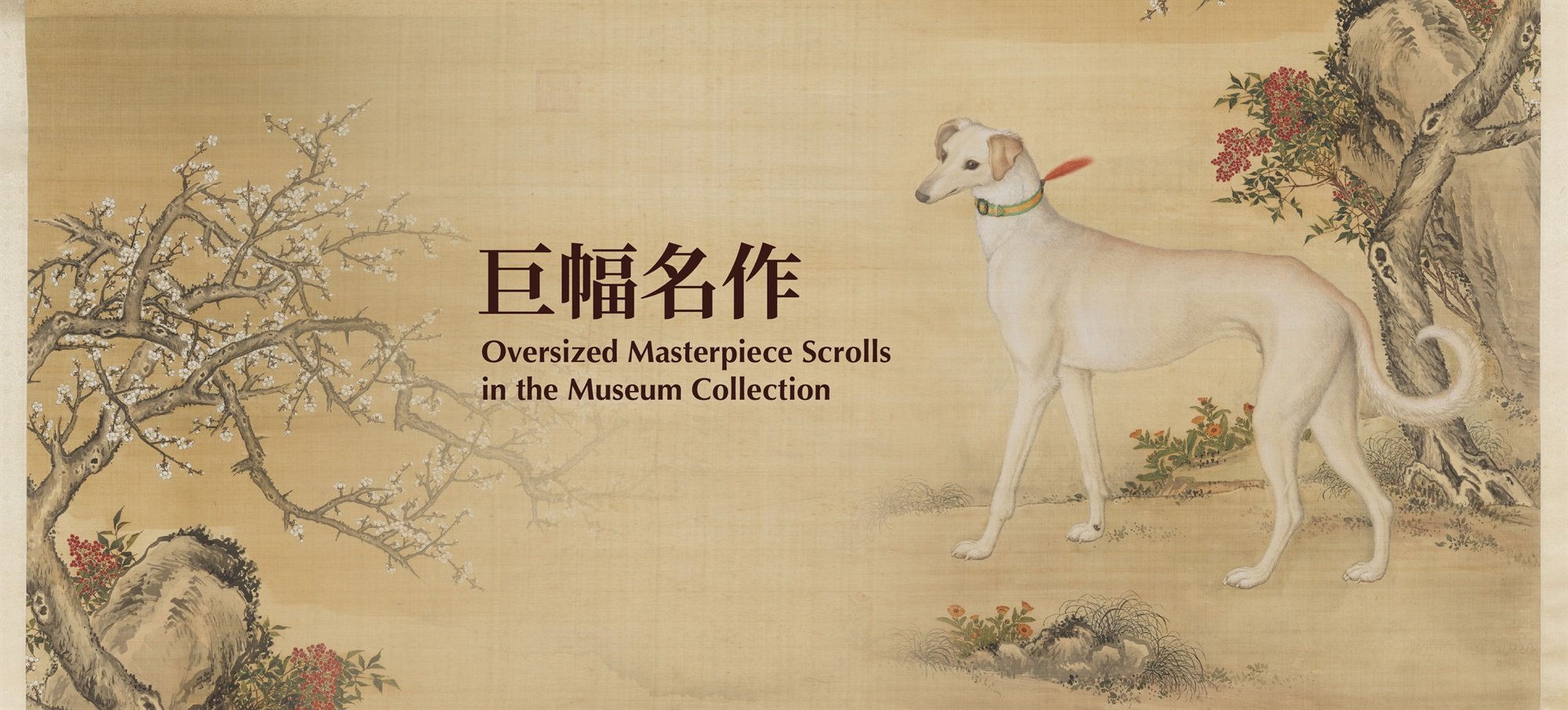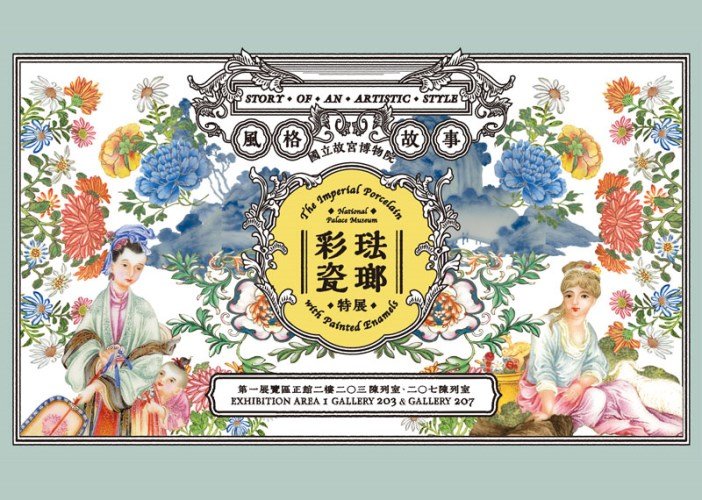
Taipei Dangdai 2025
The sixth edition of Taipei Dangdai, presented by UBS, will take place at Taipei Nangang Exhibition Center, from 9 – 11 May 2025 (VIP Preview 8 May).

Art Taipei 2024
ART TAIPEI 2024, organized by the Taiwan Art Gallery Association (TAGA), will be held at Hall 1 of Taipei World Trade Center from October 25-28.

Taipei Dangdai 2024
Taipei Dangdai returns from 10 - 12 May 2024 (VIP Preview & Vernissage, 9 May)

Boundless – A Maritime Perspective of East-West Cultural Exchange in the 16th Century
“Where the land ends and the sea begins,” said the Portuguese poet, Luís Vaz de Camões (?-1580). These two lines described how the edge of the land was precisely the starting point of the sea. The context of his words bore witness to the desire for venturing overseas, which pervaded Europe during the 16th century, while encapsulating the encounters among people from different parts of the world.

Small World
“Small World,” the theme of the Taipei Biennial 2023, suggests both a promise and a threat: a promise of greater control over one’s own life, and a threat of isolation from a larger community. Our world can become smaller as we grow closer to one another, but also as we grow apart, and “Small World” takes place within such a suspended state.

Treasures from the National Palace Museum's Collection of Qing Dynasty Historical Documents: Imperial Qing Architectural Drawings and Documents
Traditional imperial living spaces were meticulously planned and constructed. The institutions involved in the planning had well-defined roles, including surveying and measurement, drawing and design, materials estimation, construction execution, and final inspection. The scale of involvement was vast, requiring significant human and material resources.

The Expressive Significance of Brush and Ink: Selections from the History of Chinese Calligraphy
To meet the need for recording information and ideas, unique forms of calligraphy (the art of writing) have been part of the Chinese cultural tradition through the ages.

Pictorial Songs of the Brush: A Guide to Paintings in the National Palace Museum Collection III
The history of Chinese painting can be compared to a symphony. The styles and traditions in figure, landscape, and bird-and-flower painting have formed themes that continue to blend to this day into a single piece of music.

Painting Animation: Spring Dawn in the Han Palace
Since 2011, the National Palace Museum initiated a series of high-resolution long scroll painting animations.

The Education of A-ge, Manchu Imperial Sons
It is difficult to fathom “laboring at study by a cold window,” an idiom known to many Chinese that reflects, both then and now, the life of a student who perseveres in the pursuit of knowledge. But for the Manchu imperial sons who were brought up in the palace and literally “born with a silver spoon in their mouths,” training in both academic and military skills were just as rigorous, if not more. Their student life was not nearly as easy-going as many people nowadays might think or imagine.

Books with Color Paintings
Before the invention of writing, oral and pictorial traditions were the main means of conveying information. But after the development of writing, texts and images could be combined to not only form a more complete system of communication but also to enrich the artistic nature of the written text.

Painting Animation: Activities of the Twelve Lunar Months
Since 2011, the National Palace Museum initiated a series of six high-resolution long scroll painting animations. Using the latest technology, several high-resolution 1080 HD projectors seamlessly unfold sceneries from classical long scroll paintings on the wall. The painting animation series reproduces nine popular paintings and calligraphy, including Up the River During Qingming (Qing court artists), Spring Morning in the Han Palace (Qiu Ying), Imitating Zhao Bosu's Latter Ode on the Red Cliff (Wen Zhengming), Syzygy of the Sun, Moon, and Five Planets (Xu Yang), Departure Herald (Anonymous), Return Clearing (Anonymous) and Activities of the Twelve Lunar Months (Qing court artists), One Hundred Horses (Giuseppe Castligione), The Cold Food Observance (Su Shi), Poem in Seven-character Verse (Huang Tingjian). Inspired by historical material related to the artworks, the animations faithfully present the true spirit of the original paintings and their most attractive parts. A fascinating feature of the long scroll painting is its ability to simultaneously manifest chronological continuity and segmentation. As a result of the unique painting scale and traditional right to left reading direction, painting compositions unfurl accordingly and emphasize horizontal relationships. Oftentimes, scenes occurring at different points in time were depicted on a single scroll.

The Expressive Significance of Brush and Ink : A Guided Journey Through the History of Chinese Calligraphy II
To meet the need for recording information and ideas, unique forms of calligraphy (the art of writing) have been part of the Chinese cultural tradition through the ages. Naturally finding applications in daily life, calligraphy still serves as a continuous link between the past and the present. The development of calligraphy, long a subject of interest in Chinese culture, is the theme of this exhibit, which presents to the public selections from the National Palace Museum collection arranged in chronological order for a general overview.

Immerse in the NPM Digital Exhibition: Journey through the Four Seasons
This exhibition will focus on the narratives surroundings the museum’s cultural relics, and extend them into two interesting branches: the “Trail of Master Painter,” which revolved around Giuseppe Castiglione's artistic relics, and the “Journey through the Four Seasons” based on the museum’s collections of landscape paintings.

Spotlight on National Treasures III
The Three Taoist Officials Making an Inspection Tour

Pictorial Songs of the Brush: A Guide to Paintings in the National Palace Museum Collection II
The history of Chinese painting can be compared to a symphony. The styles and traditions in figure, landscape, and bird-and-flower painting have formed themes that continue to blend to this day into a single piece of music. Painters through the ages have made up this "orchestra," composing and performing many movements and variations within this tradition.

Oversized Masterpiece Scrolls in the Museum Collection II
Exhibit List
Copy of Gu Kaizhi's “Goddess of the Luo River” Ding Guanpeng (fl. 1708-1771), Qing dynasty
Lifting the Alms Bowl, Zhu Fu (fl. 1368-1398), Ming dynasty
Raising the Alms Bowl Attributed to Qiu Ying (ca. 1482-1559), Ming dynasty
“Text on Dispelling the Ghost of Weariness” and a Landscape, Huang Yingchen (fl. 1644-1722), Qing dynasty
After a Tang Painting on “Yü the Great Controlling Floods” Xie Sui (fl. 1736-1795), Qing dynasty
Zhou Wenju’s “Yü the Great Controlling Floods” with an Imperial Inscription Anonymous, Qing dynasty (1644-1911)
Tapestry of the Buddhist Pure Land with an Imperial Eulogy of Praise Anonymous, Qing dynasty (1644-1911)

Taipei Dangdai
The fourth edition of Taipei Dangdai Art & Ideas will showcase the best of the world’s galleries with a strong emphasis on new and exciting voices from Asia. Taipei Dangdai presents a vital opportunity for collectors and visitors to engage with the rich Taiwanese and wider Asian art scene through exceptional quality artworks and programming. As one of the most significant contemporary art fairs in Asia, Taipei Dangdai, presented by UBS, takes place from 12-14 May, 2023, at Taipei Nangang Exhibition Center.

Investigation and Restoration of Cultural Relics at the National Palace Museum
The National Palace Museum collection includes nearly 700,000 priceless cultural artifacts. Deeply aware of the importance of preservation and conservation, the Museum has established the only independent department of conservation in Taiwan. It includes four divisions for the conservation of calligraphy and painting, rare books and historical documents, objects, and textiles, as well as a science laboratory for the preventive preservation and conservation, the research on the history of crafts, and the collection of cultural relics.

Pictorial Songs of the Brush: A Guide to Paintings in the National Palace Museum Collection
The history of Chinese painting can be compared to a symphony. The styles and traditions in figure, landscape, and bird-and-flower painting have formed themes that continue to blend to this day into a single piece of music. Painters through the ages have made up this "orchestra," composing and performing many movements and variations within this tradition.

Spotlight on National Treasures
Su Shi (1037-1101), who is widely known as Su Dongpo, was a renowned figure in the fields of literature and calligraphy who lived during the Northern Song dynasty. In the third year of Emperor Shenzong’s Yuanfeng reign period (1080), Su was exiled to Huangzhou, the site of the modern city of Huanggang in Hubei province. During this period, he embarked on an overwater sojourn past an area known as Red Cliff. In the seventh and tenth lunar months of the fifth year of the Yuanfeng reign period (1082), Su penned two pieces of writing recording his trip. The first is known as “Former Ode to the Red Cliff” and the second as “Latter Ode to the Red Cliff.” These two works exerted an enormous influence on poetry, prose, calligraphy, and painting created in the eras that followed. This “Spotlight on National Treasures” exhibition presents a selection of two works of calligraphy—officially certified as National Treasures—written during the Yuan dynasty by Zhao Mengfu (1254-1322) and known collectively as “Album with Both Odes to the Red Cliff in Running Script.” Zhao Mengfu’s life, writings, and art are all discussed in this exhibition, in order to convey a sense of his deep reverence for Su Shi.

Oversized Masterpiece Scrolls in the Museum Collection
Ten Paintings of Prized Dogs—Frost Flower Hawk Lang Shining (Giuseppe Castiglioni), Qing dynasty
Lang Shining (1688-1766), born Giuseppe Castiglioni, was an Italian who became a Jesuit priest at the age of nineteen. When he was twenty-seven years old he traveled to China, where he offered his services as a painter to the Qing court. He served as a court painter during the reigns of emperors Kangxi, Yongzheng, and Qianlong.
This painting depicts a xiquan (a breed of hunting dog) standing before a white-blossomed plum tree. The painting gets its name because of the dog’s frost colored fur and the way its vigorous posture evokes a hawk in flight. Lang Shining was adept at using Chinese painting tools and media. He combined these with occidental techniques for painting perspective and realistic shading, in order to capture the spirits of his subjects. His works thus feature rich coloration and highly lifelike forms.
Flowers and Plants [Bogu/Assorted Antiques] Painting Chen Zhaofeng, Qing dynasty
Chen Zhaofeng (dates unknown), who had the style name Mengqi, was a painter skilled in the flowers-and-birds genre. In the seventh year of the Guangxu reign period (1881), he was granted a seventh degree cap badge (a symbol of rank). He served in the imperial court or over twenty years, until he retired in old age.
Wisteria, peach blossoms, and other plants are tucked into the large, wide-mouthed porcelain vase on the left. The vase’s neck is decorated with a gemstone and lotus flower design, while its shoulders are festooned with a banana leaf pattern. Its body features cartouche openings filled with ink landscape paintings. Butterfly telescope goldfish are painted swimming among aquatic grasses in the glass fishbowl on the right. Wisteria, treasure vases, and goldfish symbolize auspiciousness, peace, and abundant wealth. This painting would have been hung in a palace during Chinese New Year celebrations.

Painting Animation: Up the River During Qingming
"Up the River During Qingming" is a masterpiece of genre painting, with many replications done over the centuries. This version, completed in 1736, the first year of the Qianlong Emperor's reign, was the collaborative effort of five Qing court artists—Chen Mei, Sun Hu, Jin Kun, Dai Hong, and Cheng Zhidao. Known as the "Qing court version," the hand scroll is richly detailed and faithful to the styles and contents of previous versions. Notable features are bright coloring, mature brushwork, ruled-line architectural representation, and the fine and exact rendering of the figures. Although it departs from the old Song dynasty prototype, it is still an invaluable source of study for Ming and Qing society and customs.

The Expressive Significance of Brush and Ink : A Guided Journey Through the History of Chinese Calligraphy
To meet the need for recording information and ideas, unique forms of calligraphy (the art of writing) have been part of the Chinese cultural tradition through the ages. Naturally finding applications in daily life, calligraphy still serves as a continuous link between the past and the present. The development of calligraphy, long a subject of interest in Chinese culture, is the theme of this exhibit, which presents to the public selections from the National Palace Museum collection arranged in chronological order for a general overview.

Splendors of the Biblioteca Apostolica Vaticana and Rare Books from the Ming and Qing Imperial Libraries
The Bibliotheca Apostolica Vaticana is the library of the popes. Inaugurated in the mid-15th century, it was conceived as an institution “for the common convenience of learned men (pro communi doctorum vivorum commodo),” one “of all manuscripts in both Latin and Greek that is worthy of the dignity of the Pope and the Apostolic See (liborum omnium tum latinorum tum grecorum bibliotecam condecentem pontificis et sedis apostolicae dignitati).”

Painting Animation: Imitating Zhao Bosu's "Latter Ode on the Red Cliff"
Imitating Zhao Bosu's Illustration of the Latter Red Cliff
Wen Zhengming (1470 - 1559), Ming dynasty
Handscroll, ink and color on silk, 31.5 × 541.6 cm

All That Flourishes Under the Brush: The Late Ming Culturati Wang Shizhen and His Endeavors
Wang Shizhen (1526-1590), an important historian and litterateur of the Ming dynasty, has many works to his name. Also a devoted member of the arts, he took part in almost all of the major cultural realms of his day. Of particular note was the fact that he astutely observed the flourishing of society in the sixteenth century during the later part of the Ming dynasty. This special exhibition examines the fascinating life of Wang Shizhen and his endeavors, offering a glimpse at the cultural efflorescence of the late Ming that bore witness to exceptional creativity and diverse competition in cultural life at the time. And through the eyes and under the brush of Wang Shizhen as a historian, it offers a unique perspective on the cultural underpinnings of this flourishing age.

The Imperial Porcelain with Painted Enamels
The exhibition shows that porcelains with painted enamels of the three reigns of the Qing dynasty, Kangxi, Yongzheng and Qianlong (1662-1795), are the most iconic porcelain wares in the 18th century. Also, it elaborates these three stages of styles were established with the invention and development of the pigments as well as the different requests for the official wares from the Emperors.
